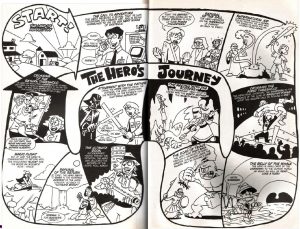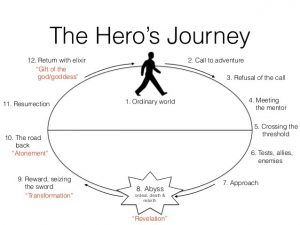Once again I will point out that I have not yet taught an exclusively on-line class, yet. However, I have begun the process of migrating my onsite strategies into the online instructional environment in the form of a hybrid class or an onsite class heavily supported with a content management system. As I reflect on teaching the writing process for this week’s assignment, I am going to discuss how I approach a writing assignment for one of my Adult ESL intermediate reading and writing classes. Although this is a f2f classroom, it is an example of a class I support with an online classroom. I integrate the use of content management systems to expose students to the online environment, as many of them are unfamiliar with using these types of interfaces. Not only will this benefit them in future classes academic /non-academic courses, but it also is a useful workforce skill. So, that means all materials including support articles, presentations, videos and other additional resources can be found online in the virtual classroom. I also require them to use the message board for responding to prompts as well as discussions.
As the language is still challenging for many of my learners (not to say that it is not for some of our more advanced learners), the thought of having to put their ideas on paper can be a frightening endeavor, to say the least. So, my first challenge is to create an environment in which they feel they will not be embarrassed. In Teaching the OWI Course, Warnock provides us with an example of high-stakes vs low-stakes writing environment. With the diversity of my students’ backgrounds and educational levels, it is essential for me to create a low-stakes writing environment allowing them to explore and engage with the writing as they learn to incorporate academic writing conventions into their texts. My secondary focus is to guide them along the process of writing as I work with them on content, fluency, finding their own voice, peer review/feedback and revisions.
As mentioned above, for many the thought of putting ink on paper (or keyboard stroke to screen), it is something is something to be dreaded. My first challenge is to try and overcome this and get students motivated enough to actually be excited about sharing their ideas on a subject and to write them down. In any new writing assignment I focus on strong pre-writing activities aimed at providing learners with confidence-boosting experiences and essential vocabulary. As I do this, I try to find subjects that will allow me to incorporate some of the students’ backgrounds so they can activate their prior knowledge and draw information from a familiar place as they take on these new challenges.
Below is a sample of one class in a larger unit on narrative writing.
Assignment: Narrative Writing Assignment
Telling Stories to Incite Writing – Re-telling a story, Summarizing.
“The Cave you fear to enter, holds the treasure you seek.”
Exploring the Hero’s Journey (Joseph Campbell)
- The pre-writing activity begins with a question prompt, What makes a hero?
- I ask students to work with a partner to discuss their understanding of the word hero and what defines it. I often will post a prompt like this online on our message board (Canvas or Google Groups) prior to the class meeting so that students will have responded to it prior to the lesson.
- We collectively explore some of these ideas that students have presented and then I ask them to work in small teams to create a graphic organizer, mind map, or other diagram to visually express the idea of the question prompt. Students then share their maps either f2f or post them online, to which other groups are to respond to and provide some feedback or ask questions.
- I follow up on this pre-writing activity with a secondary prompt, “the cave you fear to enter, holds the treasure you seek.” Having already worked on the ideas of what defines a “hero”, students often make a correlation between these two prompts in their responses.
- Following this, I introduce the theme of the writing assignment, to explore the Hero’s Journey in literature and culture. My introduction draws on, naturally as a total Star Wars geek, Luke Skywalker, but also Frodo, Indiana Jones, and the wizard boy himself, Harry Potter! We then explore the arc of the Hero’s Journey as defined by Joseph Campbell.
- We then analyze written synopsis of character development in Star Wars (and some Pixar movies) and we work on identifying the transitions that occur to the hero. Students use a Hero’s Journey worksheet to take notes of the transitions as they try to identify them.
- The following videos are either posted on the CMS (or shown in class):
- Ted Ed: What makes a hero?
https://www.youtube.com/watch?v=Hhk4N9A0oCA
- Netflix’s Myths & Monsters: Joseph Campbell & The Hero’s Journey https://www.youtube.com/watch?v=DwnxYXOTy94
- Every story is the same:
https://www.youtube.com/watch?v=LuD2Aa0zFiAStudents are then asked to think of a hero in their own culture and using the Hero’s Journey worksheet, map evolution of that character’s arc. This worksheet then serves as an outline for them to work on their first draft of the narrative writing assignment, writing about a hero from their native culture.
The class goes on from here as we work through the writing process, planning, organizing, writing, editing, revising.
WritingwithMachines
teaching • technology • composition



Pingback: WritingwithMachines